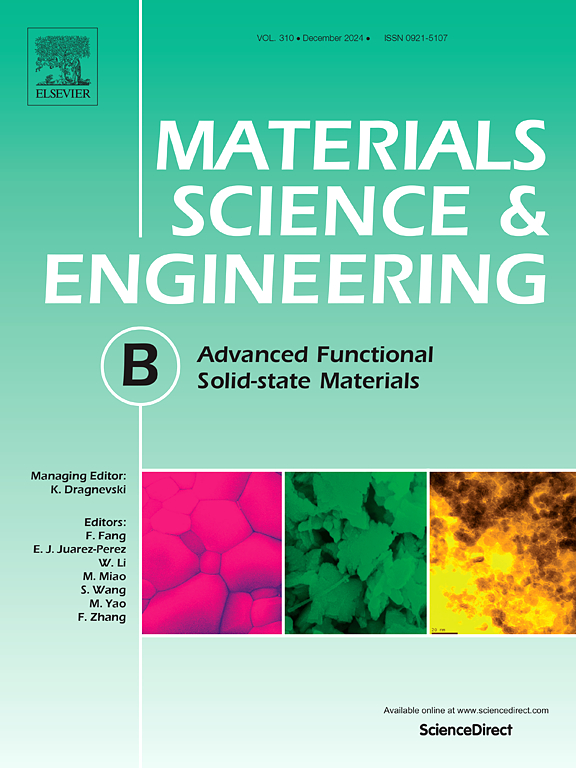Effect of different electrolytes on the efficient performance of δ-MnO2 electrode for supercapacitor applications
IF 3.9
3区 材料科学
Q2 MATERIALS SCIENCE, MULTIDISCIPLINARY
引用次数: 0
Abstract
Herein, δ-MnO2 nanostructures were synthesized via electrodeposition and systematically studied for supercapacitor applications. Structural analysis using X-ray diffraction (XRD) confirmed the formation of δ-MnO2 with a crystallite size of 21.5 nm, while field emission scanning electron microscopy (FESEM) revealed a nanowire morphology with diameters around 22 nm. Transmission electron microscopy (TEM) further validated a thickness range of 22 nm, which is indicative of a high surface area beneficial for charge transport. The porous structure was corroborated by Brunauer-Emmett-Teller (BET) analysis, and Fourier-transform infrared spectroscopy (FTIR) confirmed Mn-O stretching at 522 cm−1. X-ray photoelectron spectroscopy (XPS) highlighted core-level spectra, including Mn oxidation states, underscoring the material’s electrochemical activity. Electrodes exhibited superior hydrophilicity in NaOH; validated by contact angle analysis, and delivered a remarkable specific capacitance of 864F/g in 0.1 M NaOH at 5 mV/s, with 81 % retention over 2500 cycles. This study highlights material’s exceptional potential for next-generation supercapacitors.

求助全文
约1分钟内获得全文
求助全文
来源期刊

Materials Science and Engineering: B
工程技术-材料科学:综合
CiteScore
5.60
自引率
2.80%
发文量
481
审稿时长
3.5 months
期刊介绍:
The journal provides an international medium for the publication of theoretical and experimental studies and reviews related to the electronic, electrochemical, ionic, magnetic, optical, and biosensing properties of solid state materials in bulk, thin film and particulate forms. Papers dealing with synthesis, processing, characterization, structure, physical properties and computational aspects of nano-crystalline, crystalline, amorphous and glassy forms of ceramics, semiconductors, layered insertion compounds, low-dimensional compounds and systems, fast-ion conductors, polymers and dielectrics are viewed as suitable for publication. Articles focused on nano-structured aspects of these advanced solid-state materials will also be considered suitable.
 求助内容:
求助内容: 应助结果提醒方式:
应助结果提醒方式:


